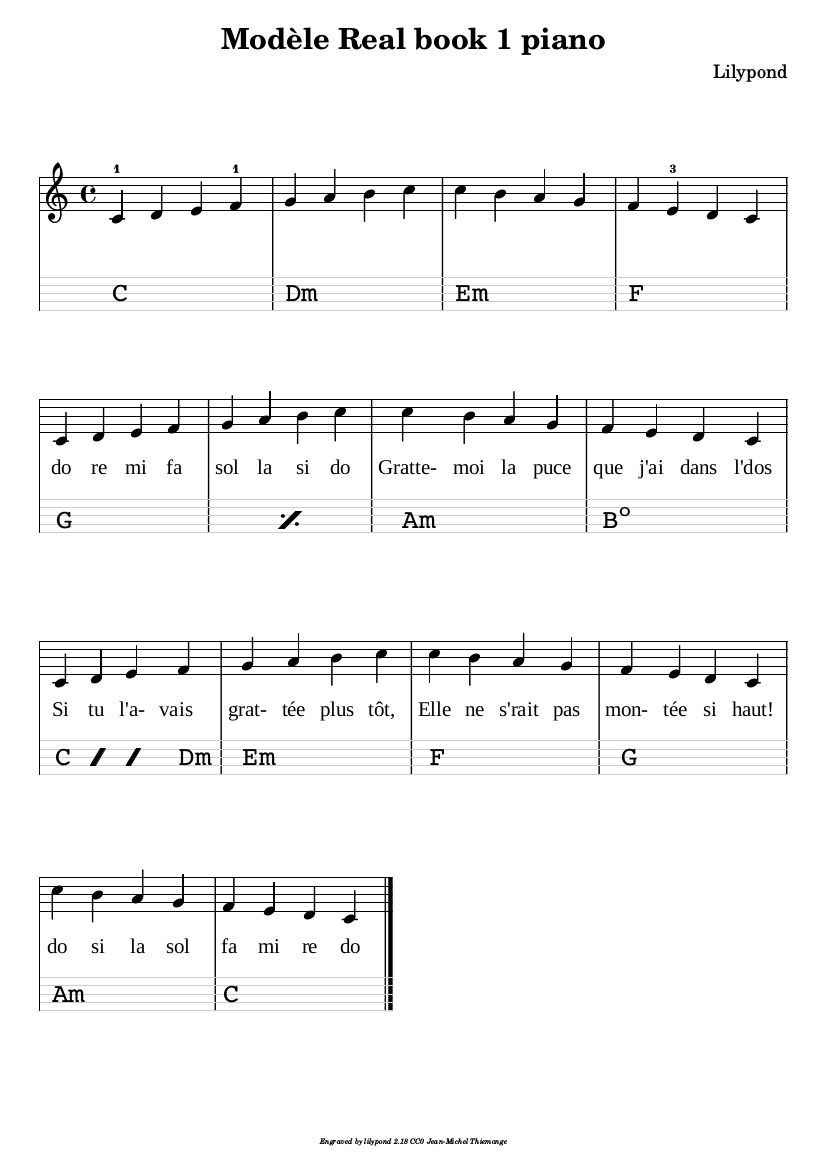
/the-hut-on-fowls-legs-baba-yaga-score-for-9-movement-of-pictures-at-exhibition-suite-for-piano-by-modest-mussorgsky-1839-1881-549582181-57c883063df78c71b641ca0f.jpg)
- #LILYPOND PIANO SCORE SAMPLE PDF#
- #LILYPOND PIANO SCORE SAMPLE SOFTWARE#
- #LILYPOND PIANO SCORE SAMPLE WINDOWS#
Rosegarden's main layout is similar to many other popular sequencers.
#LILYPOND PIANO SCORE SAMPLE PDF#
If you are happy with the preview, you may print the score using the printing capability of the PDF viewer, or use File → Print. You can conveniently view the file produced with File → Print Preview, which exports the file into a temporary file and processes it directly with LilyPond for preview with a PDF viewer. There is also a collection of LilyPond options which is accessed from File → Print Rosegarden has the ability to insert special exportable directives and track parameters that provide access to LilyPond features. Rosegarden outputs LilyPond files that in turn are turned into pdf files for printing.
#LILYPOND PIANO SCORE SAMPLE SOFTWARE#
LilyPond is music typesetting software that reads a specialised text file format and produces high-quality typeset output. Rosegarden uses LilyPond as a back-end for printing scores. (See also Notation from performance data.) You should use the notation editor to tidy up the score before printing.


Producing a score from performance data is a hard task, and in most cases it's unreasonable to expect a default printout based on MIDI data to be very readable. You can print out a composition in the form of a musical score, using File → Print. Although Rosegarden composition files are very carefully checked for compatibility from one Rosegarden version to the next, no long-term guarantees are made for the Project file format. Note that Rosegarden Project format is an interchange format, not an archival format. Use File → Export → Export Rosegarden Project file… to export the current composition and its associated data into a Rosegarden Project file, and File → Import → Import Rosegarden Project file… to expand a Rosegarden Project file back into a composition and load it. A Project file contains your composition, all of the audio files it uses, any further data files required for plugins used in the composition, and any additional files you may want to include, all in one big bundle. This is where Rosegarden Project files are useful. When you need to transfer a project from one computer to another, or to a friend or colleague, this can be inconvenient. The audio files themselves are not stored in the Rosegarden composition file instead you are expected to keep track of their location on disk yourself (see Audio segments).
#LILYPOND PIANO SCORE SAMPLE WINDOWS#
It uses ALSA to provide MIDI support, and JACK for audio, both of which limit Rosegarden to Linux for the time being, but that should hopefully change in the future, with OS-X being the next most accessible platform, and Windows the most difficult to reach.Ī Rosegarden composition file (.rg) contains all of the the note information for your composition, as well as other data such as MIDI controller settings, plugin details, and the names of any audio files referred to in your composition. Rosegarden is built using Qt – A cross-platform application and UI framework. Underneath these three editors, Rosegarden provides a segment-based mechanism for arranging blocks of MIDI and audio data on a canvas that brings something akin to the flexibility of a layer-based image editing program to the realm of music. Rosegarden provides three distinct ways of viewing, editing, and entering MIDI events, including a powerful notation editor that provides many advanced features not typically found in the notation facility of MIDI sequencers. Rosegarden is designed to look and act in a manner familiar to experienced users coming from the commercial software world, while also being accessible and friendly to users new to music software generally. Rosegarden also contains well-rounded notation editing support for high quality printed output via LilyPond. You can use Rosegarden to write, edit, and organise music to create a composition, which you can then synthesise, add effects to, and mix down for burning to CD or distribution on the web. Rosegarden allows you to record, arrange, and compose music, in the shape of traditional score or MIDI data, or of audio files either imported or recorded from a microphone, guitar or whatever audio source you care to specify. Rosegarden is a MIDI and audio sequencer and musical notation editor whose purpose is to serve as the sequencer of choice for users who prefer to work with music notation.


 0 kommentar(er)
0 kommentar(er)
